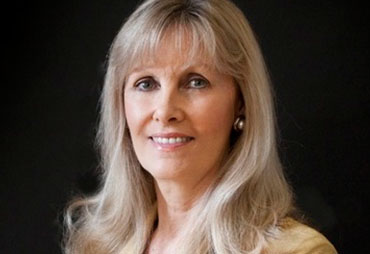In an increasingly polarised world, obtaining 100 percent agreement for anything seems impossible. Yet, in our survey of leading social entrepreneurs across the world, 100 percent of respondents agreed on one point. Every social entrepreneur said they would do it all over again, despite:
- 75 percent reporting use of personal funds to support their social enterprise
- 75 percent revealing personal financial hardships from earning a lower-than-private sector salary
- 63 percent saying they had no time for hobbies or interests
- And others citing missed family celebrations, burnout, stress, feeling cheated, exhausted and isolated, and having no time for personal health or development.
Are we gluttons for punishments? Closet masochists? Well, maybe.
Related article: Redefining social entrepreneurs
We are a group driven by something bigger than ourselves, by feeling like we’ve made a difference in the world and to those we serve.
In a world where social issues are proliferating, where governments and countries are looking inward instead of outward and where geographic boundaries are becoming blurred, the role of social entrepreneur has never been more vital.
The first ever practitioner-driven social entrepreneurship survey
After nearly five decades of combined experience leading social enterprises, we’ve become increasingly troubled by what we see as significant barriers to the field of social innovation. Last August, we highlighted 6 obstacles that are holding the social enterprise sector back. The article, followed by a standing room-only discussion at the Schwab Foundation Social Entrepreneurs’ Summit in New York in September, marked the first phase of a practitioner-led initiative to engage fellow social entrepreneurs in identifying sector-wide challenges. Our aim is to foster forthright discussion and initiate ideas to propel our collective work forward.
To expand input from social sector practitioners, over the last few months we invited fellow Schwab Foundation social entrepreneurs to share their candid responses in a deep-dive survey. In addition to the personal costs listed above, here is some of what our peers shared as the key factors hindering the sector’s ability to scale:
While two-thirds of respondents said that the ability to scale is “very important” for addressing social issues, 47 percent of respondents said that the lack of consistent access to capital is the #1 barrier to scaling their organisation. No one in the sector is likely to find this response surprising. In fact, the only surprise to us is that this number isn’t higher.
The system does not consistently identify the best solutions, help to refine them, and support scaling.
For far too long, serendipity and personal connections have largely influenced access to funding. Yet funders’ decisions often determine where, what, and how much progress is made on key issues confronting our world. The system does not consistently identify the best solutions, help to refine them, and support scaling.
Related article: The social innovation paradox: Why it’s hard to be both innovative and scalable
In a 2013 article in Harvard Business Review entitled Social Impact Investing Will Be the New Venture Capital, Sir Ronald Cohen, and William A. Sahlman contend that the issue isn’t a lack of available money per se. Instead they cite three factors: massive inefficiencies in capital allocation; funders who refuse to cover overhead; and a lack of effective funding models – all of which make it impossible for social organisations to scale. We agree. And so do our peers, who shared comments like these:
“Operating capital for innovation and R&D is hard to access. The sector, at least in Africa, is still not considered a viable place to launch and create a career. Also, there is too much unnecessary competition and redundancy created by donors, and the ‘vanity’ of wanting ‘name-branded’ solutions.”
“One of the key stresses within the social sector is the decision by most programmatic donors to pay below costs. To break even, social change implementers must spend tremendous amounts of time raising unrestricted funding to make up the shortfall.”
While there has been early experimentation with social impact bonds, these and related funding innovation efforts remain in their infancy – and consequently, unavailable to the majority of the social sector.

The concept of failure needs to be normalised and elevated as a prerequisite in any learning organisation. | Picture courtesy: Wachiwit / Getty Images
“We reported failure honestly: We had a large percentage of device failure in one of our early pilots which has since been totally solved. But the funder used it to dismiss the value of the project long term.”
Related article: We need to talk about failure
Nearly 30 percent of respondents cited a fear of failure as a primary barrier to scaling the sector. This fear is part of managing risk in any enterprise – but in the social sector it is impeding more significant impact field-wide. The failure of products and services is an assumed part of the private sector. In fact, “fail fast” has become a theory of corporate innovation. But that is not true in the social sector, where social entrepreneurs perceive funders as being risk-averse. In this environment, the concept of failure becomes an even bigger impediment, with social entrepreneurs feeling that if they don’t meet or exceed expectations, they will lose already limited sources of future funding.
We need to think big, test-drive new ways to approach the issues, and know that we may hit some brick walls.
This fear has a cascade of consequences. It stifles innovation. Attempting to address an unjust status quo or bring about systemic change requires innovation – and, by definition, innovative strategies have a higher failure rate. Rather than playing it safe and executing plans that only create change at the margins, the sector needs to collectively come to grips with what real change looks like. We need to think big, test-drive new ways to approach the issues, and know that we may hit some brick walls. The concept of failure needs to be normalised and elevated as a prerequisite in any learning organisation.
It also exacerbates a lack of transparency. If failure directly jeopardizes funding, and funding is the #1 scarce resource, there is an elevated impulse to inflate impact reports and a reluctance to fully disclose problems. Social entrepreneurs may not admit what has gone wrong. The field then loses the collective learning that failures can teach.
- This and other input expressed throughout the survey underscore the acute need for candid conversations between social entrepreneurs and the funding community – conversations that forge new kinds of relationships. It is important that this dialogue takes place first at a sector level, which can then set the stage for more authentic discussions to percolate between individual social entrepreneurs and funders.
- A parallel effort is needed to create stronger sector support – on the part of funders and peers – to detoxify the fear of failure for social entrepreneurs. Reinforcing the value of failure is an important learning tool and cultural norm in the innovation process.
- Social entrepreneurs can promote internal cultures to detoxify failure. At First Book, for example, we give an annual “Brick Wall” award to the person who develops a great idea, when for some reason or another, the idea hits a brick wall. The goal is to promote innovation and acknowledge that not every new idea will succeed, but it’s important to keep trying. And it works.
Social entrepreneurs identified the lack of collaboration between social enterprises as an urgent challenge within the sector that needs to change. Respondents specifically noted that the pressure for funding often fosters competition between organisations, instead of collaboration, potentially mitigating the impact that social entrepreneurs have on those they serve. This was a consistent theme, with comments like:
The design of the social sector disincentivises collaboration.
“The sector is not collaborating well – not exploring how we co-design solutions; how we co-fund initiatives; how we leverage our unique expertise to drive a networked approach to scale. I continue to hear that we are still in competition with each other to source revenues – this is disappointing, but real. The sector needs to explore innovative partnerships/collaborations with the private sector, governments, other social enterprises.”
Related article: Collaboration doesn’t work. Here’s why.
This finding mirrors our own experience. The design of the social sector disincentivises collaboration. While social entrepreneurs share a dedication to resolving urgent social issues and market failures, limited funds and a highly competitive environment created by the philanthropic community cultivate and reward competition, rather than collaboration. Pivoting between the roller-coaster demands of managing an enterprise, meeting payroll, preparing board reports, and other activities make it difficult to reserve the mental and physical bandwidth necessary for collaboration.
- Establish a framework to explore further collaboration within the social sector. This includes looking at new sector approaches for cost-sharing and cost-efficiencies that leverage economies of scale. The cost of not doing so means social entrepreneurs continue to work in silos. Among the suggestions were Exploring technologies or services that could be shared; sharing ideas around revenue generation, leading to sustainability and less dependency on the philanthropic community.
- Funders can leverage their position to incentivise collaboration by building in an expectation and funds to support collaboration into existing grant awards. This could include creating opportunities for cross-learning within their funding portfolio of grantees.
A 21st-century model of social entrepreneurship
Social entrepreneurs remain dedicated to their cause; they are proud of what they do. But the sector remains a work in progress. While we are encouraged by the candor, commitment, and creativity of our peers, we cannot build a field where leaders exist hand-to-mouth, where capital for innovation and growth is woefully inadequate, where fear of failure encourages only incremental change, and where competition overrides our vested interest in collaboration.
It’s time for the philanthropic community, academics, ecosystem support networks, and social entrepreneurs to roll up our sleeves and tackle issues head on, to create long-overdue changes such as:
- A merit-based system for funders to consider best practices and models
- A human-centered design approach to tackle challenges within the sector – applying the same principles we as social entrepreneurs use to address social issues
- An analysis of social impact measurement: are social enterprises measuring the right things? Are donors measuring the right things?
- A media presence for scaling/scaled solutions – not just start-ups
- A system for honoring notable failures and sharing the learnings from those failures
Collaborative discussions on ideas like these are critical. Only then can we ensure the broader development of the sector and its ability to build the capacity and capabilities of social sector leaders to address the challenges we face.
About the survey respondents
This deep-dive survey, completed between December 2018-February 2019, reflects the experience of 56 fellows awarded over the past two decades by the Schwab Foundation for Social Entrepreneurship, the sister organisation of the World Economic Forum:
- Approximately 87 percent of the survey participants are founders or co-founders of their social enterprises.
- Almost half of respondents lead nonprofits (48 percent), followed by hybrids (34 percent), and for-profits (18 percent).
- 57 percent have a leadership tenure of 16+ years; 55 percent manage a staff that ranges in size between 1-100 members.
- 63 percent of the survey participants are male; 68 percent are 50+ years of age. The latter mirrors the makeup of the Schwab Foundation, which is largely comprised of later stage social enterprises.
- 38 percent of the respondents identified as Caucasian/white; 18 percent Asian; 7 percent Latino; 4 percent black/African/African American; 32 percent did not provide a response (this question was optional).
- 27 percent of the survey respondents lead social enterprises that serve Africa; 25 percent serve Asia; 20 percent serve globally; 18 percent serve South/Central America; 5 percent serve the Middle East; 4 percent serve North America; and 2 percent serve Europe.
This article was originally published on World Economic Forum.





